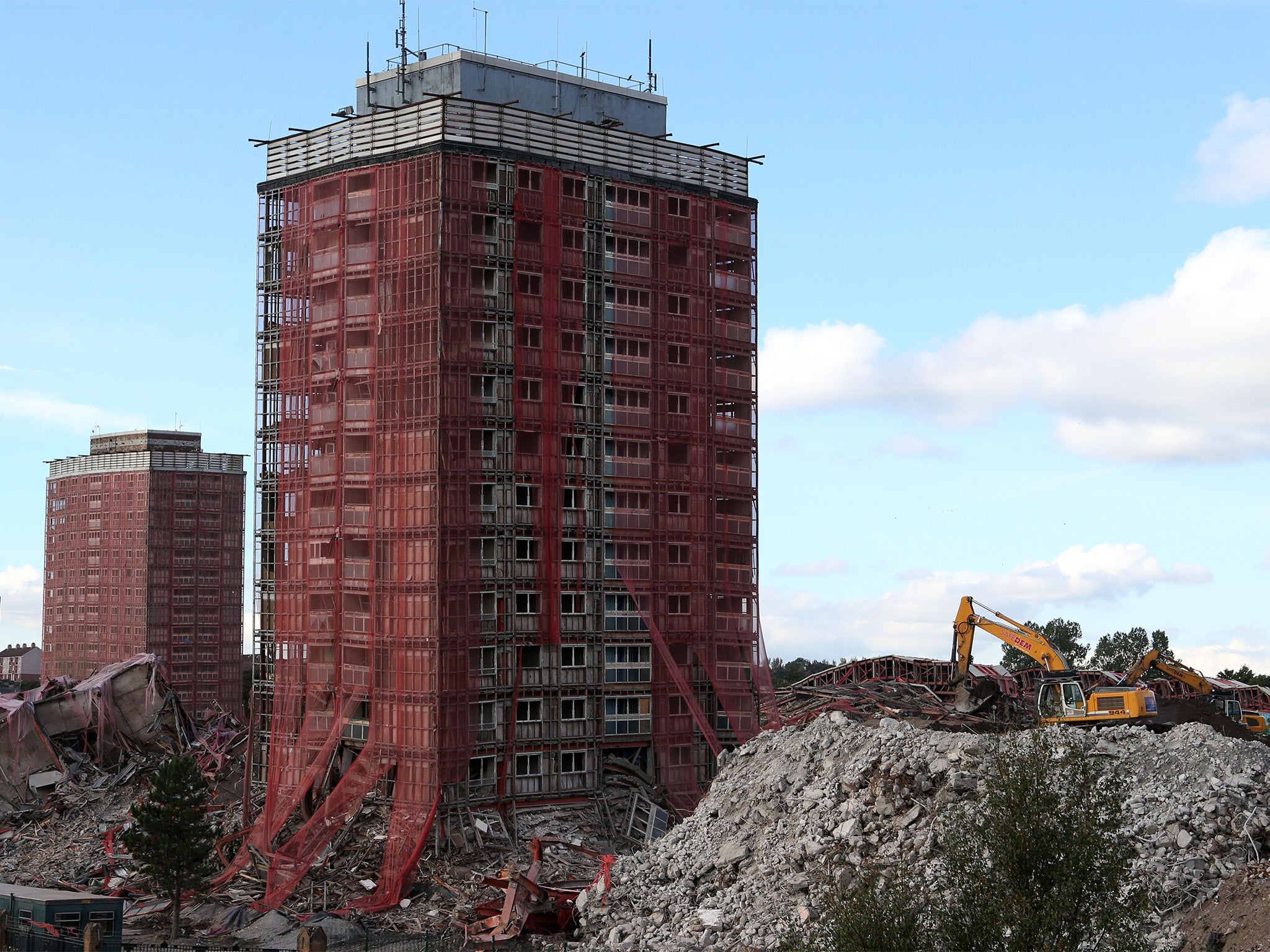Red Road: Why the demolition of the iconic tower blocks became Glasgow's damp squib
Contractors have admitted the job didn’t go 'exactly as planned'

Your support helps us to tell the story
From reproductive rights to climate change to Big Tech, The Independent is on the ground when the story is developing. Whether it's investigating the financials of Elon Musk's pro-Trump PAC or producing our latest documentary, 'The A Word', which shines a light on the American women fighting for reproductive rights, we know how important it is to parse out the facts from the messaging.
At such a critical moment in US history, we need reporters on the ground. Your donation allows us to keep sending journalists to speak to both sides of the story.
The Independent is trusted by Americans across the entire political spectrum. And unlike many other quality news outlets, we choose not to lock Americans out of our reporting and analysis with paywalls. We believe quality journalism should be available to everyone, paid for by those who can afford it.
Your support makes all the difference.The blast echoed across Glasgow and huge plumes of dust and debris filled the air as six of the city’s Red Road tower blocks were brought down last weekend – well, almost. Two towers remained half standing, leaving more than 2,000 people unable to return home.
But as the dust settled and the council launched an investigation, Holly Price, a leading demolition expert and Britain and Europe’s only female explosives engineer, said the contractors responsible should not be judged too harshly.
“Explosive demolition is exceptionally complex,” said Ms Price. “It’s not as simple as it looks.”
That was certainly the case at Red Road. Today, work was continuing to take the remaining 10 storeys down by mechanical means, as contractors admitted the job didn’t go “exactly as planned”.
Ms Price, 35, training director for Keltbray, the UK’s largest demolition firm, said explosives experts have to contend with “200 years of design history” and a “vast array of different structures”. It’s not surprising then that “stand-ups” happen from time to time.
“Every single job we do is unique,” added Ms Price, who oversaw the demolition of the 25-storey New London Bridge House in central London in advance of the construction of the Shard.
“There is no blueprint and no two buildings are the same, even if they were built to identical specification. Over time, weather, the quality of material and alternations – which are not always recorded – can make a big difference.
“You can’t learn this stuff solely in the classroom, you have to have a feel for it.”
Explosive demolition is exceptionally complex - it’s not as simple as it looks
Mark Anthony, editor of Demolition magazine, agreed: “Explosive demolition is as much an art as it is a science. You are dealing with unknowns and, in the case of the Red Road flats, an estate built in the 1960s where precise details of plans and building materials might not necessarily be freely available.”
Spectators don’t always appreciate this, and Ms Price said demolition crews still get angry when people describe them as “thugs with sledgehammers and dynamite”. There are perhaps just a dozen individuals or teams in the world experienced enough to pull off the complex demolition of towers such as the Red Road blocks.
The Glasgow towers were originally due to be demolished during the Commonwealth Games but protests killed off that idea. However, thousands of people gathered to watch last Sunday’s spectacle.
“Of course the TV cameras add pressure,” said Ms Price. “None of us grew up wanting to do TV work – we grew up wanting to do demolition.” There are fewer chances these days for the media to capture these “big bangs”. Ms Price said: “Most tower blocks have already been brought down. We blew them all up.”
Instead most demolition, including work currently being carried out by Keltbray at London Bridge and Earls Court, is what engineers call reverse mechanical demolition. “A great deal of demolition is still done with pneumatic drills for breaking up concrete and hot torches for cutting steel.”
Robots fitted with a “pulverising head” are also used, which Ms Price said looks like a dinosaur, complete with a mouth and teeth. “We don’t tend use hammers any more unless we really have to – they are far too noisy”.
Join our commenting forum
Join thought-provoking conversations, follow other Independent readers and see their replies
Comments